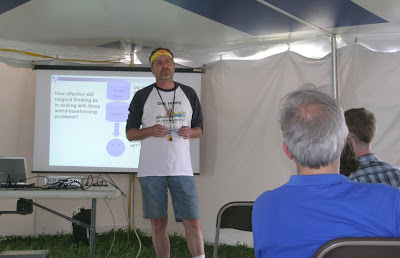by jboullion | Jun 30, 2009 | Uncategorized
From a brief guide published by Focus on Energy:
Cities and towns across Wisconsin are seeking ways to address concerns about global climate change while improving the environment and their local quality of life.
Environmentally-friendly or “green” options for communities have long included programs to encourage recycling and the purchase of recycled products, improving public transportation and developing new zoning ordinances that reduce urban sprawl.
Recently, many communities have begun to seek strategies for achieving carbon reduction goals as a way of becoming greener. Because fossil energy use is the primary source of carbon emissions, communities are turning to energy efficiency and
renewable energy to make their energy production and use more sustainable.
The guide answers the following questions:
WHAT IS SUSTAINABLE ENERGY?
HOW DOES SUSTAINABLE ENERGY PLANNING FIT
INTO OTHER GREEN COMMUNITY GOALS?
HOW DO COMMUNITIES GET STARTED?
SUSTAINABLE ENERGY OPPORTUNITIES AND RESOURCES
by jboullion | Jun 29, 2009 | Uncategorized
From an introduction to a guide just released by the Center on Wisconsin Strategy (COWS) and Green for All:
Green For All and COWS have just released A Short Guide to Setting Up a City-Scale Retrofit Program. This guide provides a model for designing and implementing energy efficiency retrofitting programs on a citywide scale, with a goal of making these retrofits available to more households and providing good, entry-level jobs with career pathways that are accessible to low-income communities and communities of color.
Energy efficiency retrofits of our homes, schools, and workplaces are the first steps to building an inclusive clean energy economy by addressing climate change, putting people in careers, and reducing working families’ energy bills. Despite their overwhelming economic and environmental benefits, current retrofitting programs have limited capacity and limited scope. Many are available only to income-eligible individuals, or to those with the money up-front to do the work. Furthermore, many current retrofitting programs only create low-wage, short-term jobs, rather than providing pathways into sustainable careers in construction and green building.
Clearly, a new model is needed. This guide is a tool for local organizations, business leaders, entrepreneurs, elected officials, and others in cities across the country to use to promote energy efficiency in their communities. It outlines all of the important aspects of such a program, including policies, labor standards, community coalitions, and long-term funding options.
by jboullion | Jun 26, 2009 | Uncategorized
Join the other 534 Facebook fans of the Midwest Renewable Energy Association —
You’ll pick up news, notices of events, and tibits like this:
Total # of attendees at the 20th Annual Energy Fair: 23,206. That’s up from last year! Absolutely phenomenal. .
by jboullion | Jun 25, 2009 | Uncategorized
From a fact sheet published by Focus on Energy:
Rooftop wind turbines are one of the most talked about trends in renewable energy. City dwellers and suburbanites, inspired by the spread of large turbines and intrigued by the idea of producing their own energy, are today inquiring about rooftop wind systems in record numbers.
But just how viable are these systems? Can small rooftop wind turbines ever produce enough electricity to make the investment worthwhile? Find out the answers to these and other commonly asked questions below. . . .
Will a small rooftop turbine power my whole house?
No. Small turbines can only produce small quantities of electricity due to their small rotors.
Rooftops are ill-suited to harness the wind regardless of their location due to the trees and buildings surrounding a home. Rooftops in the city are particularly difficult places to harness the breeze. Not only are cities less windy than the countryside, but the air is turbulent because of trees and the variation in heights of buildings. Turbulence can wear out a turbine and reduce its life expectancy.
One analysis showed that a common type of rooftop turbine (being tested by Madison Gas Electric) “had generated about 45 kWh in about eight months (in a year about 65 kWh). The average single family WI home uses 10,000 kWh/year. Are you ready to live on 65 kWh/year?”

by jboullion | Jun 24, 2009 | Uncategorized

From a presentation by RENEW’s Michael Vickerman (above) at the Energy Fair of the Midwest Renewable Energy Association:
Energy Policy Must Recognize Energy Realities
+ Supplies of liquid fuels peaked in 2008
+ Capital is disappearing before our very eyes
+ Energy and food are the original currencies
+ The shift from stores to flows is inevitable
+ Current economy is highly energy-intensive
+ Energy return on energy invested (EROEI) must inform decision-making
+ We can’t afford to prop up existing energy sinks or engage in wealth-draining military adventures
Three paths to choose
+ Business as usual
+ Clean green technology
+ Curtailment and community

